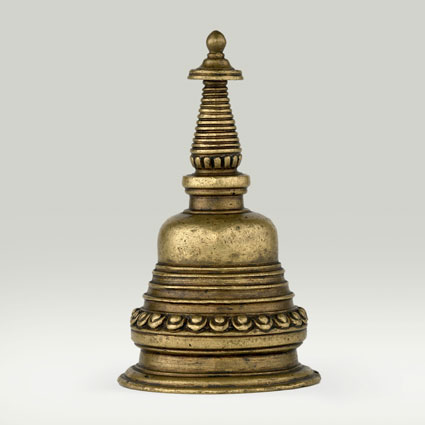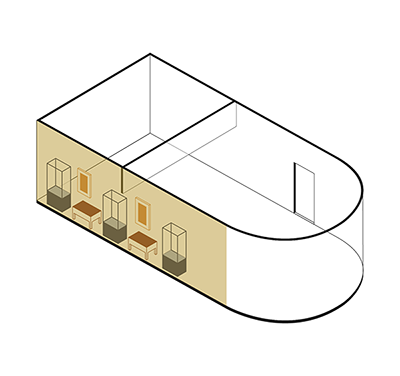ABR 018
Code: ABR 018
Country: Tibet
Style:
Date: 1300 - 1400
Dimensions in cm WxHxD: 5.5 x 9 x 5.5
Materials: Brass
This is a model of the Padmakataka Stupa located at Lumbini (Terai in Nepal), the birthplace of Siddhartha, the future Buddha Shakyamuni. Lumbini is regarded by the Buddhists as one of the “eight great places” (astamahasthana) where one of the eight important events in the life of the historical Buddha Shakyamuni took place. The shape of the Padmakataka Stupa is described as circular with a lotus petals.



